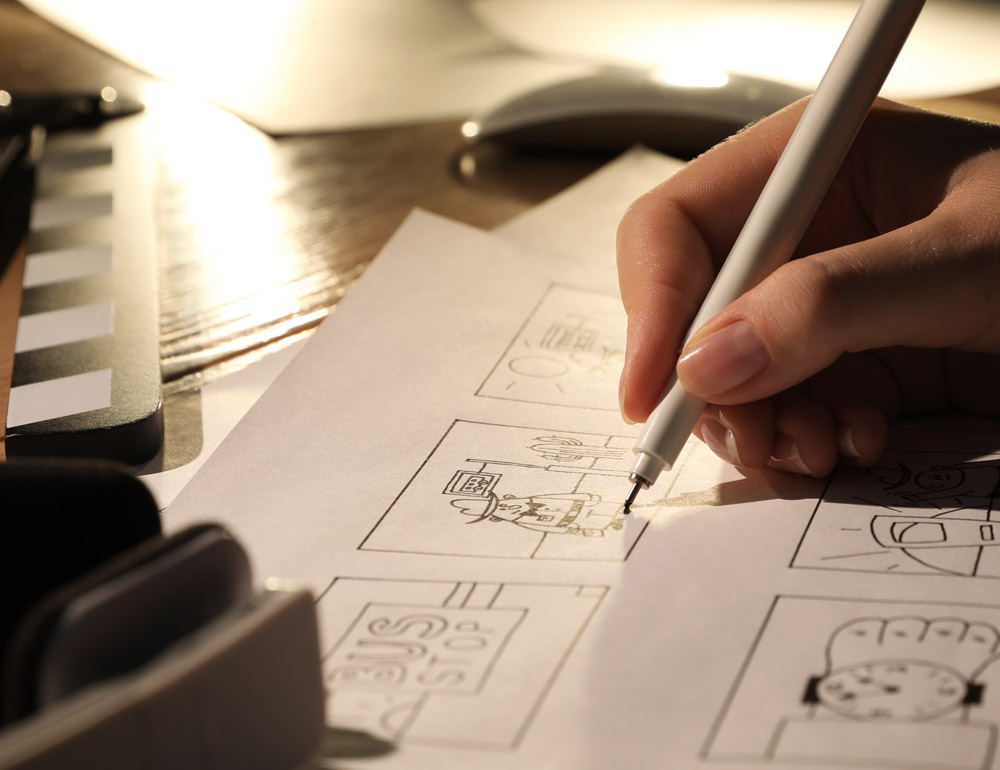
While some directors in the past started storyboarding without a script, this method is not advisable today, especially for 3D product animation due to its complexity and potential resource wastage.
However, smaller productions with limited resources might find it practical to skip the scriptwriting stage. The choice of approach depends on the project’s specific needs. Generally, for larger productions with extensive teams and multiple clients, writing a full script first is more effective.
Storyboards can range from simple sketches to detailed digital creations. The complexity of the storyboard depends on the project’s requirements. Some may use color palettes, while others may stick to greyscale. Typically, storyboards include panels, titles, and captions to convey camera moves, actions, dialogues, and staging.
At FUSE Animation, we use a 6-panel single-page template for most projects. Each panel includes scene and shot numbers, dialogues, actions, and staging details. Captions, arrows for camera movements, and color differentiation enhance the storyboard’s clarity.
Related: Guide to 3D Graphic Design






